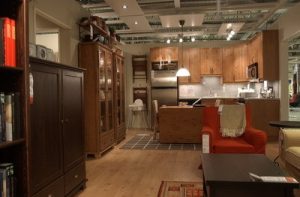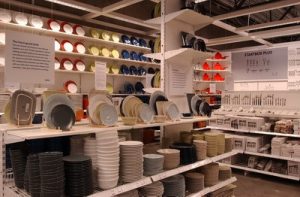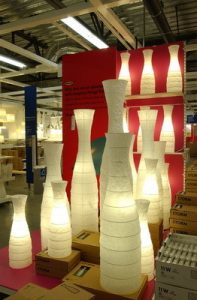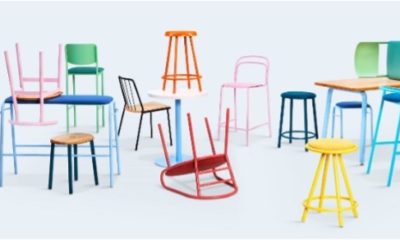Big-box retailers aren’t renowned for their innovation in store design. Typically the size (hundreds of thousands of square feet) and shape (a box) of the structures tell you all you need to know about the priority of the store – to cram as much merchandise as possible into the place.
But then there’s Ikea, the biggest box of all. Its stores are typically around 350,000 square feet, but they’re not drab and they’re not crammed. They even have navigation guides painted on the lacquered concrete floors. As befits a company that makes stylishness a priority, they don’t simply pack their stores with as much product as possible. Instead, they devote a great deal of space to creating model living spaces fully furnished with Ikea products.
They’re called room settings, designed with particular living situations and tastes in mind, and customers are encouraged either to draw inspiration from them or to re-create them in their own homes. And the settings, framed within appropriately painted walls, don’t merely display furniture. They’re accessorized from the immense variety of SKUs (10,000 or so) available in every Ikea store, to the point of appearing move-in ready, with flooring and rugs, cookware in the kitchen and dinnerware on the table.
“We want customers to be able to infer their own living situations from what they see in the room settings,” says Joseph Roth, Ikea’s director of public affairs. “So we consider who would actually live there, such as a retired couple living by a lake or a young family in the city. That’s actually where the thinking begins. We don’t start with what products we want to showcase; we start with the living situations we want to showcase.”
But because they don’t want to pigeonhole their customers, store designers don’t give the displays any direct indication of who the target group is. After all, it’s not for them to say who could live there. “What we think is right for a bachelor in his thirties might be just as good for a single mother with two children,” says Roth.
Of course, a store this big without the rigid symmetricality of rows of shelving can be easy to get lost in, so Ikea customers are led on a logical path through showrooms devoted to different areas of the home – living rooms, home offices, bedrooms, kitchens and dining – with the showrooms containing combinations of room settings and grouped product displays (chairs, pillows, dishes, etc.). It can be a challenge for the customer looking to zero in on a specific item, but both maps and shortcuts are plentiful, and anyway Ikea customers don’t seem in a hurry. The retailer reports that the average store visit is 2-3 hours.
The product offering is the same worldwide and all the stores look very similar inside and out, but individual stores update their own room settings either to reflect local living situations or to incorporate new items. The minimal decor reflects the company’s Swedish heritage. “The culture in southern Sweden is very function-based and tends to be frugal,” says Roth. “They see no reason to spend money on something than has no function. And at Ikea we have a saying about spending money on purely ornamental touches: If we can afford those things, then we should be lowering our prices.”
The room settings offer customers coordinated style options amid what would otherwise be a bewildering variety of products. “Early on, it became clear that you sell more furniture if you also sell accessories,” says Roth, “and it’s even more successful if you show them being used.” And by accessorizing (and then some) with their own vast inventory of merchandise, he adds, “it’s a win for both us and the customer because they literally can buy almost everything they see.”
Tom Zeit is a contributing writer based in Cincinnati.
Photography: Courtesy of Ikea, Conshohocken, Pa.
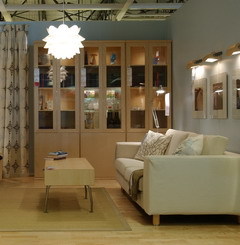

 Photo Gallery6 days ago
Photo Gallery6 days ago
 Headlines2 weeks ago
Headlines2 weeks ago
 Headlines6 days ago
Headlines6 days ago
 Headlines1 week ago
Headlines1 week ago
 Headlines2 weeks ago
Headlines2 weeks ago
 Headlines7 days ago
Headlines7 days ago
 Designer Dozen2 weeks ago
Designer Dozen2 weeks ago
 Special Reports2 weeks ago
Special Reports2 weeks ago

